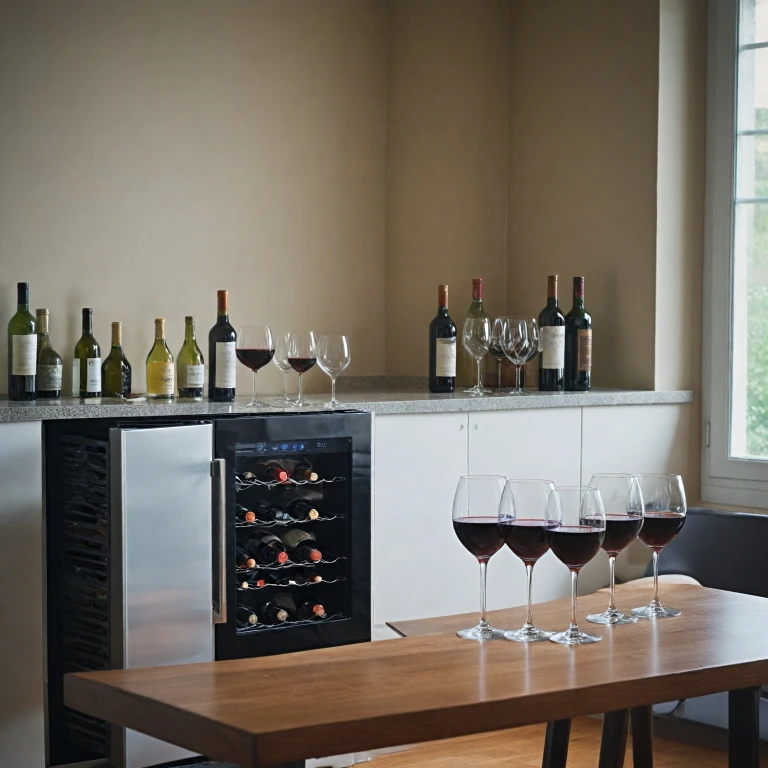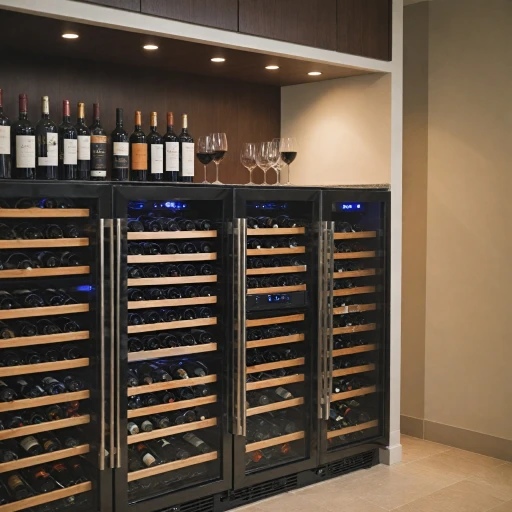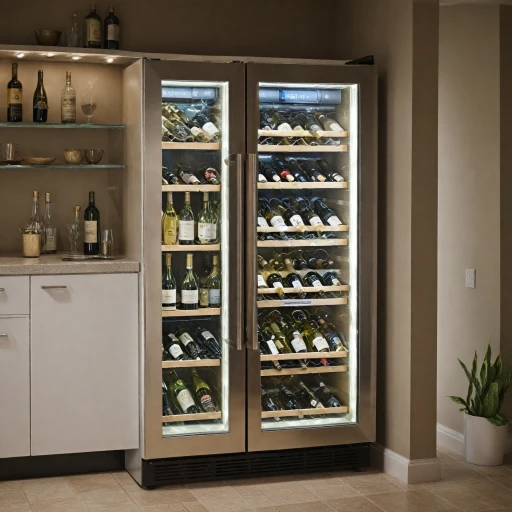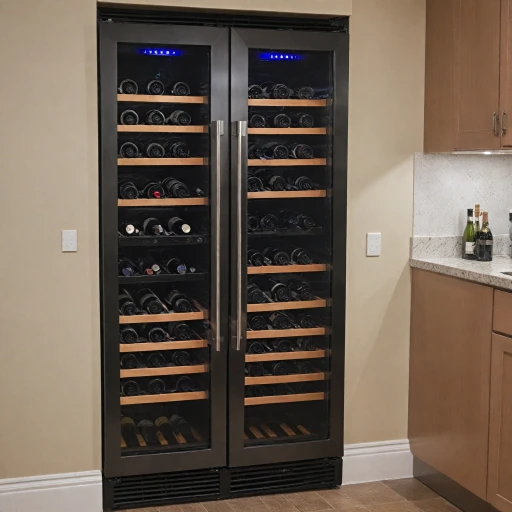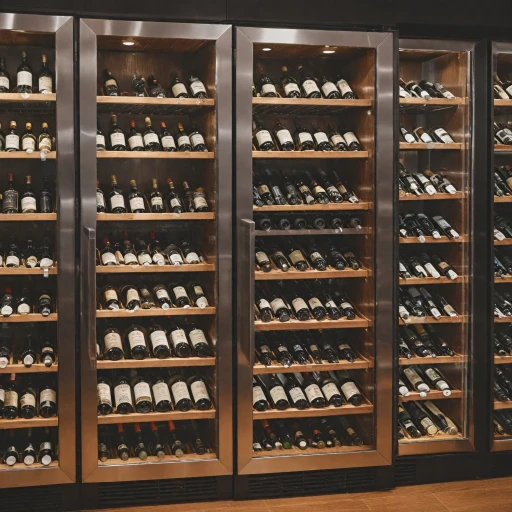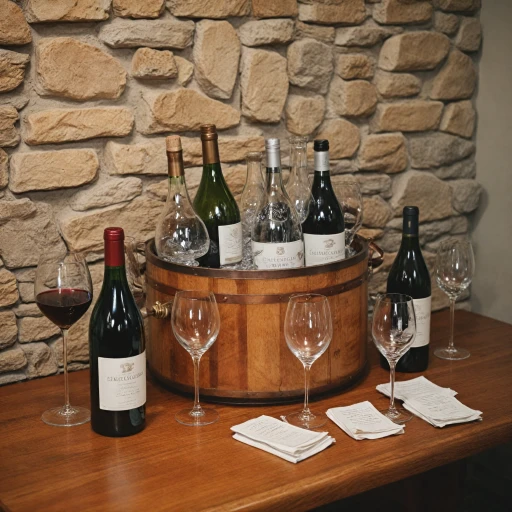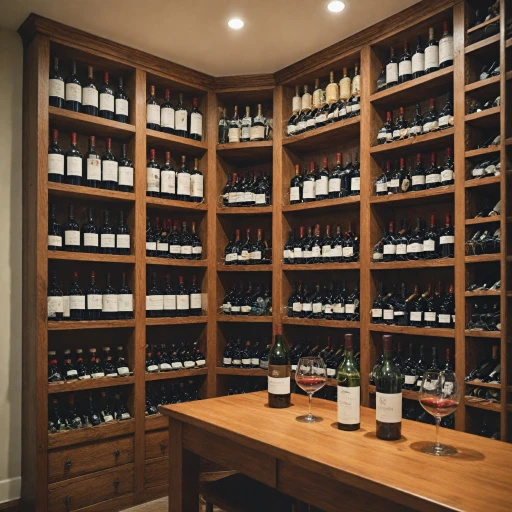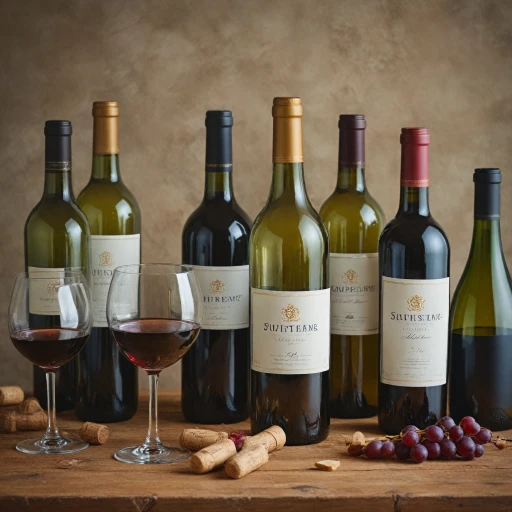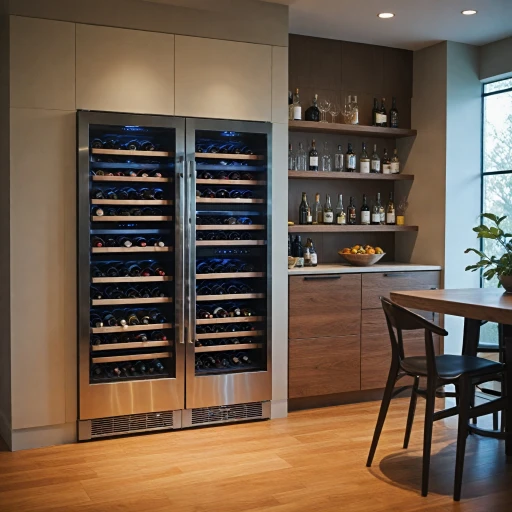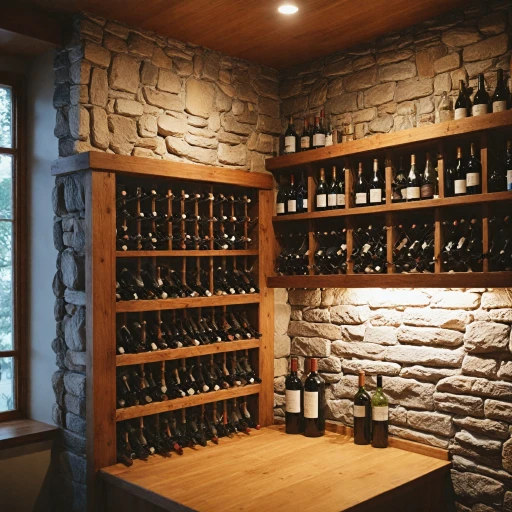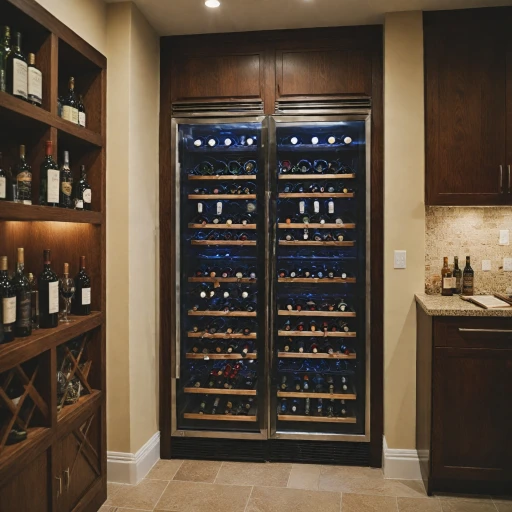
Understanding Red Wine Characteristics
Unveiling the Inherent Traits of Red Wine
Red wine, with its profound depth and character, owes its allure to a complex tapestry of flavors, aromas, and textures. Each bottle of red wine is a product of meticulous winemaking, culminating in a myriad of finished styles ranging from light and fruity to robust and full-bodied. Appreciating these nuances is key to understanding why temperature plays a pivotal role in enhancing the red wine experience. One of the defining features of red wines is the presence of tannins, which contribute to their structure and aging potential. Tannins are naturally occurring compounds found in grape skins, seeds, and stems, imparting a slightly bitter taste and astringent mouthfeel to the wine. The interplay between tannins and temperature is crucial as it affects how a wine's flavors unfold when served. Knowing the best serving temperature ensures you strike the right balance, allowing each attribute to shine. Acidity is another characteristic inherent to red wine. It offers a refreshing zest and plays an essential role in the wine's longevity when stored in a wine cellar or any other wine storage method. As discussed later in our article, maintaining proper temperature settings for red wines can help preserve their delicate balance of acidity and tannins, particularly important when considering long term storage. Finally, the aromas of red wines, ranging from earthy notes to rich berry and spice scents, are often understated when not served at their ideal temperature. Storing red wines in a wine cooler or wine fridge at appropriate temperatures helps to magnify these aromatic compounds, providing a fuller sensory experience once poured. Effective storage in a dual-zone cooler can accommodate both red and white wines, catering to their distinct temperature needs and maximizing the enjoyment of your collection. In essence, understanding the characteristics of red wine and their sensitivity to temperature is a cornerstone for any enthusiast looking to elevate their wine serving practices. The best way to savor your collection is by investing in the right wine storage solutions, and meticulously maintaining the temperature settings of your wine cooler or refrigerator.Why Temperature Matters for Red Wine
The Importance of Optimal Temperature for Red Wine
When it comes to red wines, temperature plays a crucial role in unlocking their full potential. Unlike white wines, which can be served chilled, red wines reveal their aromatic and flavor complexities at somewhat warmer temperatures. It's essential to understand how storage temperatures can make or break the wine experience, affecting both serving and long-term wine appreciation.
Red wines are typically more robust, with deeper and fuller body flavors compared to their white counterparts. This is why bottle temperatures will greatly influence the taste profile and overall enjoyment. A wine fridge offers a climate controlled environment, crucial for maintaining the integrity of your wines.
Serving temperature is key: If red wine is stored in a wine cooler at improper temperatures, it may lose its graceful bouquet and vibrant subtleties. While many aficionados store wine at room temperature, setting the wine fridge’s cooling zone too high or too low can mute or exaggerate certain flavors.
For optimal tasting results, consider wine served from dual zone fridges. These are specially designed to hold red and white wines in different compartments, allowing for precise temperature adjustments suited to each varietal. By maintaining a recommended temperature range in these areas, your wine storage strategy will be more effective, revealing the best your red wines have to offer.
Investing in a quality wine cooler or wine cellar ensures your collection is kept in the best conditions, aiding in both immediate enjoyment and long-term storage. Whether you're planning to store wine for a dinner party or for long term collection, understanding these nuances can significantly impact your wine's quality.
Ideal Temperature Range for Red Wine
Maintaining the Right Chill: The Ideal Temperatures for Storing Red Wine
Finding the best temperature for storing red wine in your wine cooler is crucial for preserving the distinct flavors and aromas that make each bottle unique. Both wine enthusiasts and casual drinkers alike understand that temperature plays a pivotal role in ensuring a wine reaches its full potential when served. Not all red wines demand the same handling. While a robust red may tolerate slightly higher temperatures, delicate reds benefit from a cooler storage environment. The recommended range for storing red wines typically falls between 55°F to 65°F (12°C to 18°C). Within this zone, wine retains its optimal character without maturing too quickly or slowly, which can occur if kept at room temperature. Several factors, such as the type of red wine and its long-term storage needs, influence the precise temperature you choose. Consequently, investing in a dual zone wine cooler can offer flexibility. These appliances permit you to store red wines at their ideal temperature while accommodating white wines in a separate section set with lower temperatures. Additionally, the use of wine fridges and wine refrigerators ensures that you can maintain the controlled environment necessary for preserving both reds and whites, unlike a standard fridge which may vacillate in temperature. By dialing in the perfect temperature, your wines will be stored safe from fluctuations that could otherwise affect their taste. Ultimately, the goal is to have red wine ready to be served at its best. A reliable wine storage system, such as a wine cooler, achieves this by offering precise temperature control—making the difference between a bottle that’s merely good and one that’s truly exceptional.Choosing the Right Wine Cooler
Selecting the Perfect Chilling Companion
Choosing the right wine cooler is essential to maintain the ideal temperature for your red wine. Amidst the myriad of options available, focusing on the following factors will ensure your red wines are preserved and served at their best.First, consider the type of wine fridge that best suits your needs. For wine enthusiasts who enjoy a variety of wines, a dual zone wine refrigerator can be beneficial. This allows you to store red and white wines at their optimal temperatures in two separate compartments. These dual zone wine fridges are convenient for those who entertain guests frequently or wish to store different types of wines.
For red wines specifically, a single zone wine cooler may suffice. It keeps your collection at a consistent temperature, suitable for the aging and storage of red wine. If you have a preference for particular varietals, ensure the wine cooler can accommodate the best temperature range for your favorites.
Bottle capacity is another factor to consider. Depending on whether you are a casual drinker or a serious collector, you will want a wine cooler that fits your collection size. For long term storage and aging, a larger wine cellar capable of storing a significant number of bottles could be more suitable.
Placement is equally important. Whether you plan to store your wine cooler in the kitchen, dining room, or a dedicated wine room, ensure the refrigerator is placed away from direct sunlight or heat sources. This will help maintain the integrity of the wine’s flavor over time. Also, consider a wine fridge with a UV-protected glass door to safeguard your collection.
Finally, consider the energy efficiency of the cooler. An efficient wine refrigerator will not only keep your wine at the perfect temperature, but also save energy and reduce costs in the long run. Quality wine coolers offer precise temperature control, ensuring your red wine remains at a stable temperature, ready to be served at the perfect moment.
By weighing these considerations, you can confidently choose the best wine storage solution for your needs, ensuring that every bottle of red wine is always ready to be served at its optimal temperature.
Tips for Maintaining Wine Cooler Efficiency
Ensuring Efficient Wine Cooler Operation
Maintaining the efficiency of your wine cooler is essential for optimal wine storage. By setting up your wine fridge properly and caring for it over time, you'll ensure that both red and white wines maintain their quality.- Avoid Frequent Door Opening: Every time the cooler door is opened, the internal temperature fluctuates. This can disrupt the delicate balance required for optimal wine storage. Keeping door openings to a minimum helps maintain a stable serving temperature for both red and white wines.
- Proper Ventilation: Place the wine cooler in a location with adequate ventilation. This will allow the cooling system to function efficiently without overheating. Insufficient ventilation can lead to increased energy consumption and even affect the cooling performance of the wine fridge.
- Regular Cleaning: Dust and debris can accumulate on the refrigerator coils, impacting the cooler’s efficiency. Regularly cleaning these components can ensure that your wine cooler operates at its best, maintaining the desired temperatures for both short and long term wine storage.
- Temperature Monitoring: Regularly check the internal temperature using a reliable thermometer. This ensures that the wines are stored at their ideal temperature, preventing any negative impact on their taste and aroma. For dual zone wine fridges, it's important to monitor both compartments separately.
- Avoid Overloading: Overcrowding your wine cooler can obstruct airflow and compel the fridge to work harder than necessary. Each bottle should have sufficient space, particularly in a dual zone cooler, to ensure even cooling.
- Annual Maintenance: Consider an annual professional maintenance check to ensure that your cooler is running efficiently. This proactive approach can help identify potential issues before they affect your wine storage conditions.
Common Mistakes in Red Wine Storage
Avoiding Common Pitfalls in Red Wine Storage
When it comes to enjoying red wine, proper storage plays a crucial role in preserving its quality and taste. Despite the best intentions, there are several common mistakes that wine enthusiasts make, which can compromise the integrity of their red wine collection. Here are a few to watch out for:- Improper Temperature Settings: Maintaining the optimal temperature is vital. As discussed earlier, red wines thrive in cooler environments, usually between 55-65°F (13-18°C). Setting your wine cooler incorrectly can lead to premature aging or muted flavors.
- Relying on Room Temperature: Many believe that red wine should be served at room temperature. While this may have been the case in centuries-old cellars, modern room temperatures are typically higher. This mistake often results in a wine being served warmer than ideal, diminishing its flavor profile.
- Ignoring Humidity Levels: Just as temperature is crucial, so is the humidity level in your wine cooler. Low humidity can dry out corks, leading to oxidation and spoilage. Aim for a humidity level of around 60-70% in your wine fridge.
- Inadequate Wine Fridge Space: Overfilling your wine cooler is a mistake. Proper air circulation is essential for maintaining consistent temperatures. Ensure there’s enough space around each bottle to allow the cooler to function efficiently.
- Poor Organization: Different wines require different storage conditions. If you own a dual zone wine cooler, use one section for red wine and the other for white. This helps in maintaining the appropriate temperatures for each type of wine.
- Ignoring Long Term Storage Needs: If you plan to store wine long term, ensure that your cooler or wine cellar is equipped for this purpose. Long term storage may require more stable temperature settings and a dedicated zone wine area to protect the bottles from fluctuations.
